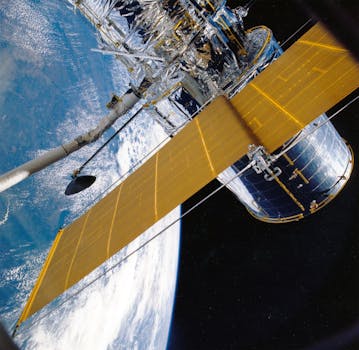Satellite Telecommunications 2023: What’s New and What’s Next? – Advancements in Satellite Technology

Satellite Telecommunications 2023: What’s New and What’s Next? – Advancements in Satellite Technology
Satellite Telecommunications 2023 is an exciting time for the industry, with numerous advancements and innovations emerging to improve global connectivity and communication. The focus keyword, Satellite Telecommunications, is at the forefront of these developments, as companies and organizations continue to push the boundaries of what is possible with satellite technology.
Introduction to Satellite Telecommunications
Satellite telecommunications refer to the use of satellites to transmit and receive data, voice, and video signals. This technology has been around for several decades, but recent advancements have made it more efficient, reliable, and accessible. The growth of the satellite telecommunications industry can be attributed to the increasing demand for global connectivity, driven by the rising use of mobile devices, the internet of things (IoT), and cloud computing.
The satellite telecommunications industry is expected to continue growing in the coming years, driven by the increasing demand for satellite-based services such as broadband internet, mobile connectivity, and earth observation. According to a report by MarketsandMarkets, the global satellite telecommunications market is projected to reach $7.5 billion by 2025, growing at a compound annual growth rate (CAGR) of 10.5% from 2020 to 2025.
Advancements in Satellite Technology
Several advancements in satellite technology are driving the growth of the satellite telecommunications industry. One of the most significant developments is the launch of new satellite constellations, such as OneWeb and Starlink, which are designed to provide global broadband internet coverage. These constellations consist of hundreds of small satellites that work together to provide high-speed internet connectivity to remote and underserved areas.
Another significant advancement is the development of new satellite transmission technologies, such as high-throughput satellites (HTS) and very high-throughput satellites (VHTS). These technologies enable faster data transmission rates and greater bandwidth, making it possible to support a wide range of applications, including video streaming, online gaming, and cloud computing.
In addition to these advancements, there is also a growing trend towards the use of smaller, more agile satellites, known as smallsats. Smallsats are designed to be more cost-effective and flexible than traditional satellites, making them ideal for a wide range of applications, including earth observation, communications, and scientific research.
What’s Next for Satellite Telecommunications?
As the satellite telecommunications industry continues to evolve, we can expect to see several new developments and innovations emerge. One of the most significant trends is the growing use of artificial intelligence (AI) and machine learning (ML) in satellite telecommunications. AI and ML can be used to optimize satellite operations, improve network performance, and enhance the overall user experience.
Another trend is the increasing use of satellite-based services for IoT applications. Satellites can provide connectivity to IoT devices in remote and underserved areas, enabling a wide range of applications, including smart agriculture, smart cities, and industrial automation.
In conclusion, Satellite Telecommunications 2023 is an exciting time for the industry, with numerous advancements and innovations emerging to improve global connectivity and communication. As the industry continues to evolve, we can expect to see new developments and trends emerge, driving growth and innovation in the years to come.



